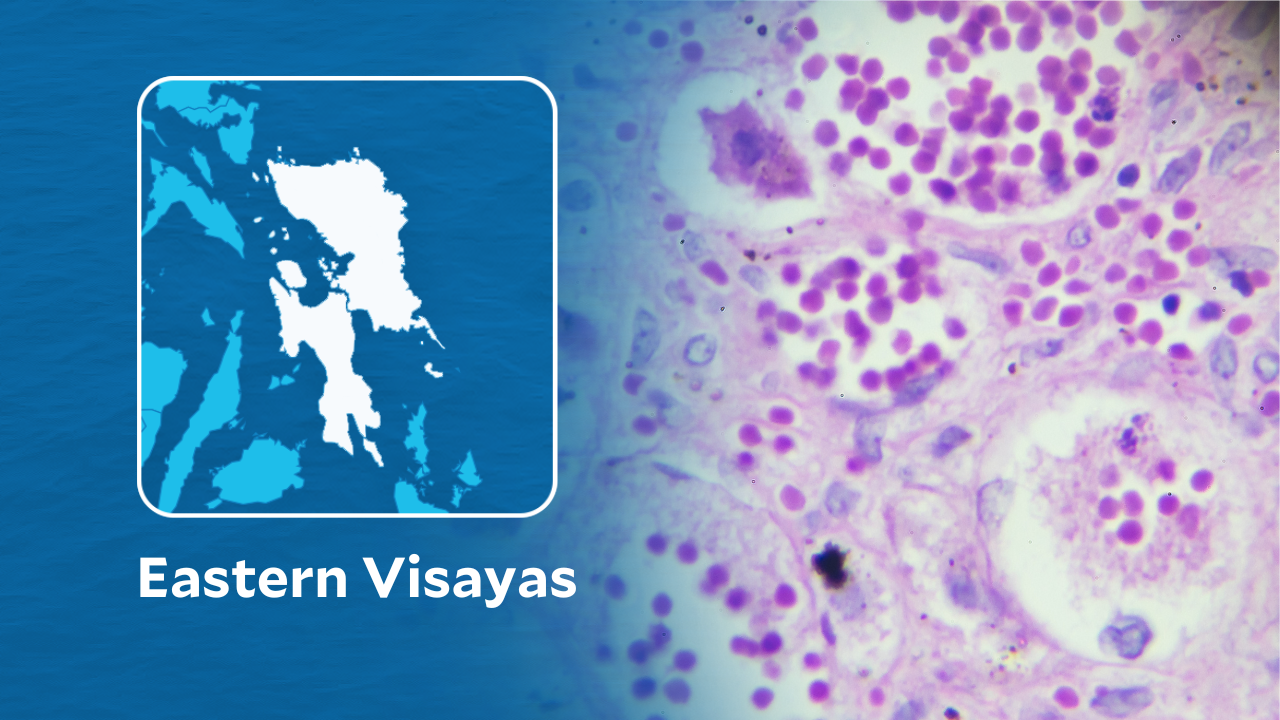TACLOBAN CITY — A parasitic disease endemic to Eastern Visayas continues to affect residents of the region.
In a report released on Oct. 24, the Department of Health in Eastern Visayas (DOH-8) said at least 519 individuals fell ill with schistosomiasis from January to October 2024.
Schistosomiasis, also known as snail fever, is caused by parasitic flatworms (schistosomes) that thrive in freshwater environments.
“Schistosomiasis remains a serious concern in our region,” said Dr. Lyn Verona, medical center chief of the Governor Benjamin T. Romualdez General Hospital and Schistosomiasis Center (GBTRGHSC).
“We have been strengthening our facilities and public health initiatives to meet the growing demand for care, especially from schistosomiasis patients,” she added.
In 2023, the region logged 775 cases.
The Center for Disease Control and Prevention (CDC) said schistosomiasis symptoms could vary depending on the phase of the infection.
In the initial acute stage, the symptoms include rash or itchy skin, fever, chills, cough, and muscle aches.
The chronic symptoms, which can develop months or even years after infection depending on which organs are affected by the eggs of the parasite, include abdominal pain, diarrhea, blood in stool or urine, and liver or spleen enlargement.
In the advanced complications, schistosomiasis can lead to serious complications, including liver damage or fibrosis or cirrhosis, kidney damage; and bladder cancer.
Treatment with appropriate antiparasitic medication, like praziquantel, is essential to prevent complications.
The DOH-8, however, has not reported any death due to schistosomiasis.
Of the current 519 cases in the region, 402 were considered acute cases while the remaining 117 were classified as chronic.
The GBTRGHSC in Palo town, Leyte has ramped up efforts to address the disease by enhancing infrastructure and strengthening its healthcare workforce.
The hospital, formerly known as the Schistosomiasis Hospital, is working toward becoming a 500-bed level 3 medical facility, specializing in infectious diseases, with a particular focus on the treatment and prevention of schistosomiasis.
Key improvements include the opening of a new outpatient department, fully equipped operating rooms, and the ongoing construction of a hemodialysis unit, CT scan facility, endoscopy unit, and 2D echocardiography services.
These expansions are designed to enhance the hospital’s ability to treat both schistosomiasis and other infectious diseases prevalent in the region.
Schistosomiasis was first documented in the Philippines among inmates from Samar and Leyte at the New Bilibid Prison in 1906.
Today, more than a century later, the disease remains a serious threat in rural areas, particularly among communities dependent on agriculture, where exposure to contaminated freshwater is common.
The DOH regional office has identified 897 villages across 63 towns and cities in Eastern Visayas that host around 1,718 freshwater snail colonies, which serve as the primary vectors for the disease.
To combat the spread of the disease, GBTRGHSC has launched several public health campaigns focused on prevention and management.
“Our public health initiatives have been instrumental in raising awareness about schistosomiasis, particularly in high-risk areas,” said Verona.
“We are committed to continuing these efforts to safeguard the health and well-being of the people in Region 8,” she added.
One initiative being undertaken is the “GBTRGHSC on Wheels Kalusugan Caravan,” a mobile healthcare program in partnership with the Tingog party list.
This caravan brings critical medical services to remote communities, offering healthcare access to populations who might otherwise go untreated.
“We’ve also increased recruitment of physicians, nurses, and healthcare personnel to meet the growing demand for schistosomiasis treatment, both at the hospital and through our outreach programs,” Verona said.
